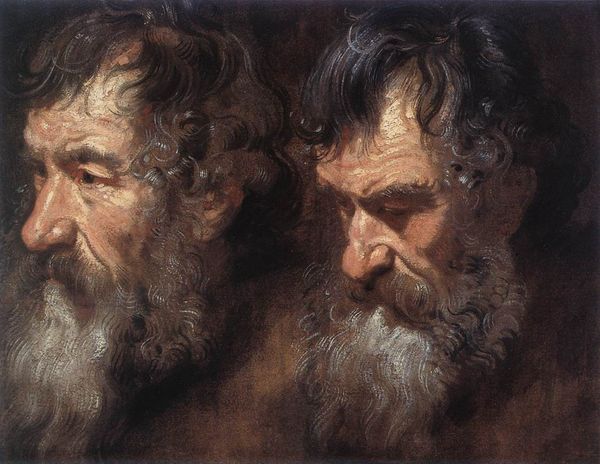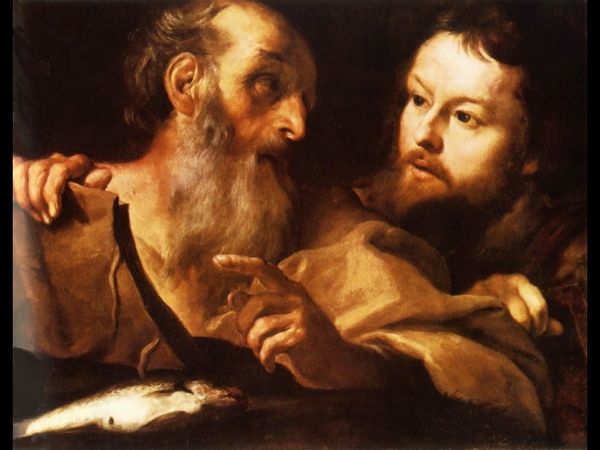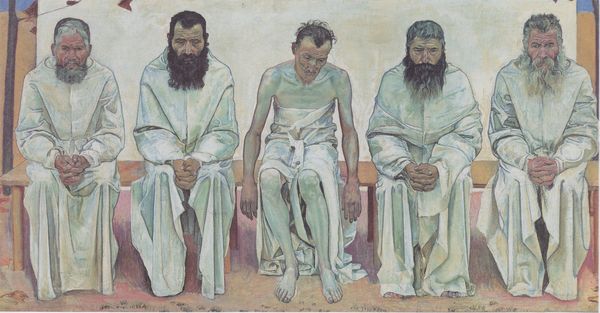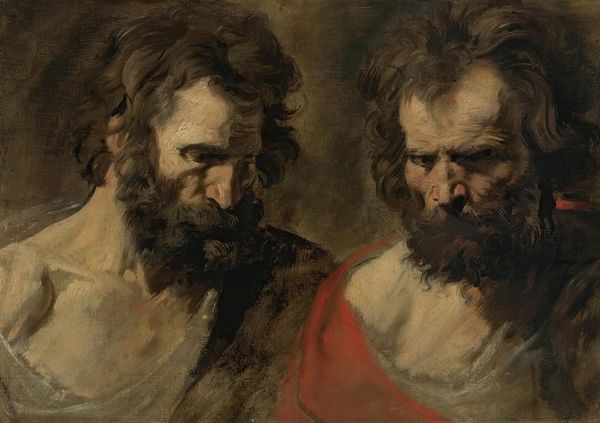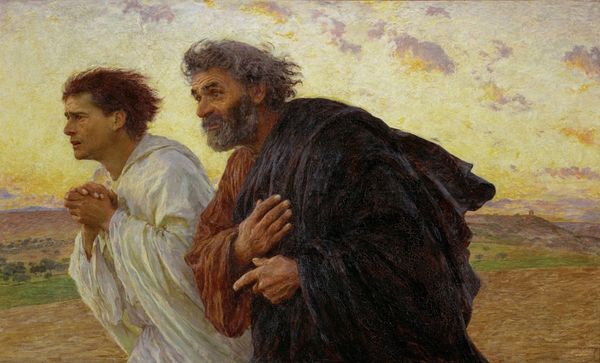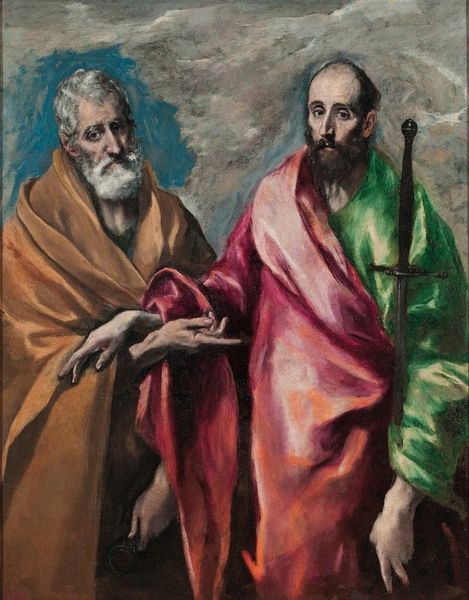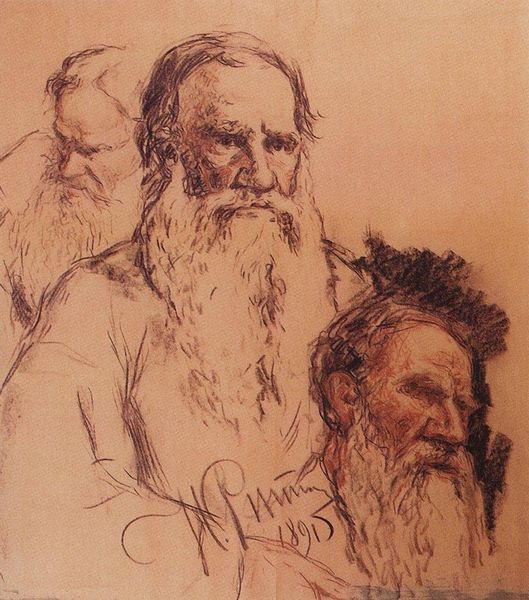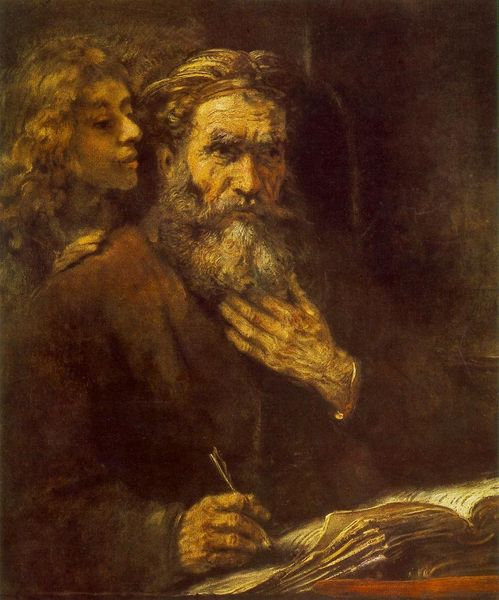
Dimensions: 59.05 x 86.99 cm
Copyright: Public domain
Editor: This is "Study for Two Heads for Boston Mural 'The Prophets'" painted by John Singer Sargent in 1892, using oil paint. There is something quite somber about the subjects depicted here. What do you make of this work? Curator: It is tempting to focus on Sargent as this celebrated name, but let’s consider the labor involved, and the mural’s commissioning. Sargent's elite status and resources allowed him to access the materials and space needed to create studies like these, influencing the accessibility and reception of the final mural project for the Boston Public Library. Editor: So you are saying, we should think about what opportunities he had, what this meant to Boston? Curator: Exactly. The use of oil paint itself—the cost, its availability at that time – speaks volumes about class and artistic production. How does Sargent's privileged position shape the representation and the eventual experience for the public interacting with the 'Prophets' mural? And who gets a voice and a face on these murals? Editor: That makes me consider, where the paints sourced? Were they locally sourced, affecting the shades we see today? It wasn't just Sargent's skill, but these materials defining the visual and social impact of the mural itself? Curator: Precisely! And we can extend this line of thought, not just to materials, but to the human cost. How many assistants did Sargent have, for instance? Their labor is also imprinted on the canvas, influencing the final appearance and the overall narrative. Do we really think about that as we gaze at it? Editor: This really reshapes how I perceive these "masterpieces." I’ll be more curious about the less glamorous details in other works. Curator: It helps to go beyond celebrating individuals to uncovering a web of influence in the production and reception of art. We must question whose story is truly told through these murals.
Comments
No comments
Be the first to comment and join the conversation on the ultimate creative platform.
